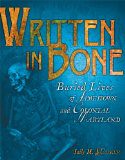I'm still working through my stack of Cybils books. All of them were read last fall, but in trying to get them all read in time, I didn't get around to formally reviewing them all yet. But here are two of the nominees, both about space!

 Mission Control, This is Apollo: The Story of the First Voyages to the Moon
Mission Control, This is Apollo: The Story of the First Voyages to the Moon Andrew Chaikin and Victoria Kohl, with paintings by Alan Bean
Chaikin, who also wrote
A Man on the Moon: The Voyages of the Apollo Astronauts writes a kid's version, detailing all of the manned Apollo missions, from the first deadly one to the final one--the last time anyone has set foot on the moon.
There are several pull-out informational pages and great photography, but the best part is the paintings. Alan Bean, who walked on the moon as part of Apollo 12, turned to painting full-time after retiring from NASA. Many of his paintings, along with paragraph-long captions written by him, show moments that weren't captured on film, and ones that try to capture the emotion of the scene instead of just the visual facts. There's also a great section on how he creates his paintings-- including bits of moon dust and scuffing his work with replicas of his lunar boots.
But Jennie! Painting instead of photos is one of your biggest complaints about
We Are the Ship! Why is it a feature here and a detriment there?
Simple-- because of how they're treated. Many of the paintings aren't mere replicas of photographs, however masterfully rendered. Also, the paintings are treated as works of art, making this almost a combination space book and art book. Each painting also has Bean's commentary-- what he was trying to capture and why he made the artistic choices that he did. They range from almost photo-realistic to fairly abstract. They also aren't the only visual elements in the book-- there are many, many photographs.
In addition to the paintings, my second favorite part of the book is the back flap, which shows a picture of Chaikin and Bean-- taken when Chaiken was 12 years old and Bean was training for Apollo 12. What a wonderful story-behind-the-story, that a boy meeting one of his heroes would grow up and create something so awesome with that same person.
Book Provided by... the publisher, for Cybils consideration

 Cars on Mars: Roving the Red Planet
Cars on Mars: Roving the Red Planet Alexandra Siy
In January 2004, two rovers landed on Mars for a mission that scientists had planned to last three months. Six years later, and they're
still going. (I checked!
You can keep up-to-date here!)
Cars on Mars details the first four years of the mission and what the rovers, and scientists back on Earth, encountered and discovered.
Lots of cool Mars photos and fun information and showing how, no matter how prepared you are and how many hypothesis you have, you'll always find something new to surprise you.
My main complaint was the food metaphors, usually used to describe bedrock. They were seriously over-extended and got a bit tortured at times. Plus, I kinda want to EAT Mars after reading this book. Even though I know it's not made of cake and ice cream, it was compared to it SO OFTEN, that I think it must be pretty tasty.* And, she also says that "Fancy cakes are indisputably delicious." (p14) Well, let me dispute that RIGHT NOW. Most fancy cake is rather disgusting. Too much frosting, and it takes so much time to put together that by the time you eat it, the cake is stale.
While I understand the cake and ice cream imagery might make it easier for some kids to visualize what was going on, there had to be a way to doing it that didn't keep bringing up food.
Or maybe I should have eaten before reading the book.
My favorite bit was actually in the back matter, a spread called "Much more about Mars and the rovers" which is little tidbits and facts that I'm assuming wouldn't fit in the main narrative. One thing I didn't know was that the company that makes the Rock Abrasion Tool (which the rovers use to scape rocks so the scientists at home can figure out what they're made of) is based in New York and the cable shields are made of aluminum from the World Trade Center as an outer-space memorial to those who died in 9/11.
*Also lots of references to blueberries, but that's NASA's fault, because that's what they named the small, round rocks the size of peppercorns
Book Provided By... the publisher, for Cybils consideration
Round-up is over at the Bookends Blog!
Links to Amazon are an affiliate link. You can help support Biblio File by purchasing any item (not just the one linked to!) through these links. Read my full disclosure statement.
 Their Skeletons Speak: Kennewick Man and the Paleoamerican World Sally M. Walker
Their Skeletons Speak: Kennewick Man and the Paleoamerican World Sally M. Walker



